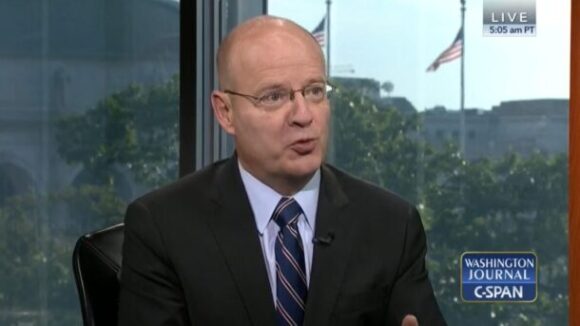Will Team Biden Weaponize Workers’ Pensions?
Big Labor abuse of worker pension and benefit funds as a means of advancing union bosses’ self-aggrandizing policy objectives is a familiar phenomenon.
 The continues Investors Business Daily its excellent job of defining and promoting Right to Work:
The continues Investors Business Daily its excellent job of defining and promoting Right to Work:
Should workers be forced to join unions or pay them dues as a condition of employment? Indiana recently became the 23rd state to say “no,” and polls show support for similar right-to-work laws in union bastions like Minnesota, Michigan and Ohio.
In Michigan, unions are so fearful that they are pushing to amend the state constitution to prevent such a law. The presumption is that if such laws passed, many employees would drop out of unions or stop paying dues, weakening labor.
There’s just one thing: There is little evidence that right-to-work laws cause people to leave unions. In fact, what evidence there is suggests the vast majority stick with their unions. That may be in part because the laws force unions to be more attentive to members’ needs.
“Somebody asked me how many workers got out because of right-to-work and I said, well, we don’t track that number,” said Jimmy Curry, president of Oklahoma AFL-CIO, whose state adopted a right-to-work law in 2001. He claims that no more than 10% of his members even register complaints.
“It’s like any other workforce, where 10% cause you 90% of your problems,” he said. “Those are the ones that bailed out” of paying dues.
Labor Department statistics indicate the number may be even smaller than that. At the time the Oklahoma law was being debated, 6.9% of state workers were unionized. In 2011, the rate was 6.4%, a decline of just 7% over the decade.
That’s not good for the unions, but it is far from a disaster. What’s more, the drop is close to the 6% decline in union membership nationally over the same period. Curry adds that membership is stable now.
That’s significant because Oklahoma is the main test case of the law’s impact. It was the last state to adopt a right-to-work law before Indiana, and it was the first in nearly a decade at the time. Most right-to-work states adopted their laws before 1960.
There isn’t much other evidence either. Most right-to-work studies focus on the laws’ economic effects, not their impact on union membership. What few studies have been done are decades-old.
What the laws do seem to do is to force union leaders to spend more time organizing and to give rank-and-file members a way to demand more accountability from leadership so they don’t drop out. That leaves the unions with less time and fewer resources for other activities, especially activism.
Mike Seney, senior vice president of the Oklahoma Chamber of Commerce, agrees. He remembers the day more than a decade ago that he went with some anxiety to make the case for a right-to-work law at a plant represented by the Teamsters.
Sure enough, Seney got into a hot argument with the local union president.
“He turned around and stormed off,” Seney said. However, “when he left, the union’s workers applauded him leaving.”
Seney later discovered that the members were not happy with the representation they were getting. He believes members like that helped approve a state constitutional amendment adopting right to work, 54%-46%, in 2001. They didn’t want to get rid of their unions, they just wanted them to do a better job, he argues.
Eisenbrey argues that while the laws don’t necessarily cost unions members, they can be debilitating for them.
“It’s a lot more work,” he said. “They have the same amount of dollars in the (union) treasury, but they’ve spent a lot more time and energy getting it.”
Unionization is just 4.2% in Arkansas and 2.9% in North Carolina, both right-to-work states. But it’s 10% in Deep-South Alabama, and 14.6% in Nevada, well above the national rate.
States without right-to-work laws don’t always have high rates either. The rate is just 6.8% in New Mexico and 8.2% in Colorado.
Gordon Lafer, an EPI economist, says that some studies do show a correlation between low unionization and right-to-work laws. But he concedes those require a lot of statistical adjustments.

Big Labor abuse of worker pension and benefit funds as a means of advancing union bosses’ self-aggrandizing policy objectives is a familiar phenomenon.

What impact does handing a union monopoly power to deal with your employer on matters concerning your pay, benefits, and work rules have on your pay?

Security guard James Reamsma is disappointed that the Right to Work repeal re-imposes forced-dues payments, but he and his coworkers still have a shot to restore their liberty.